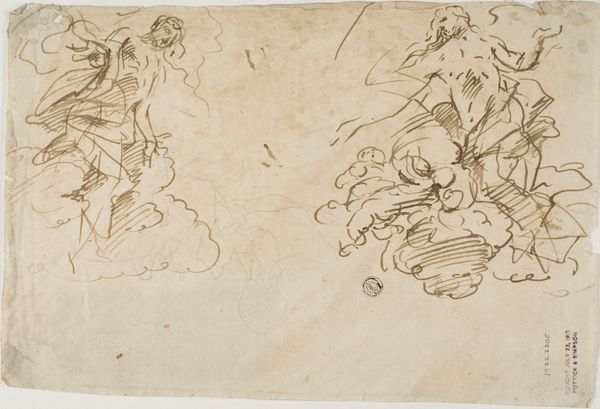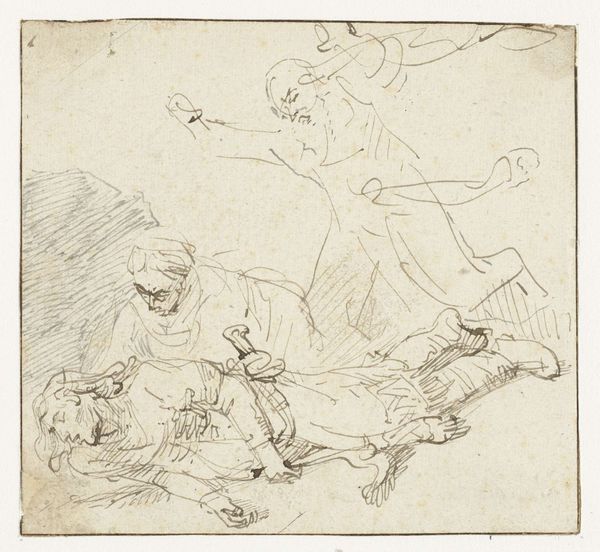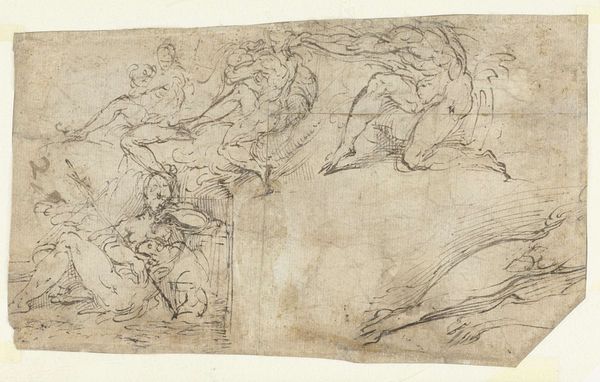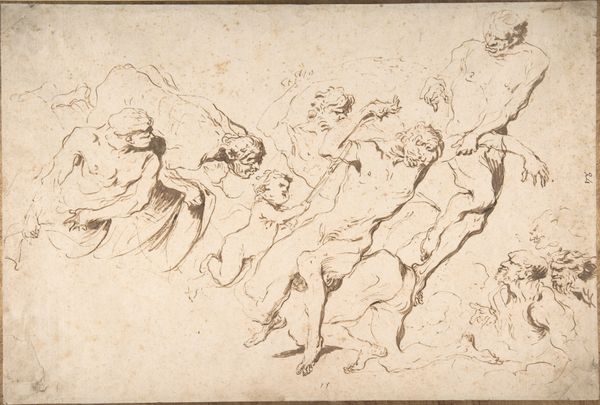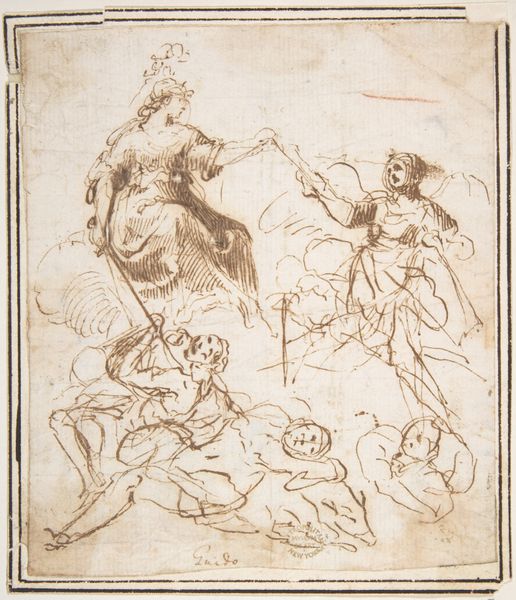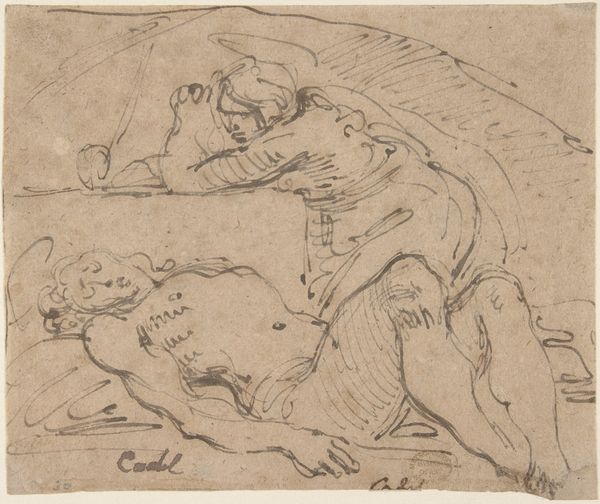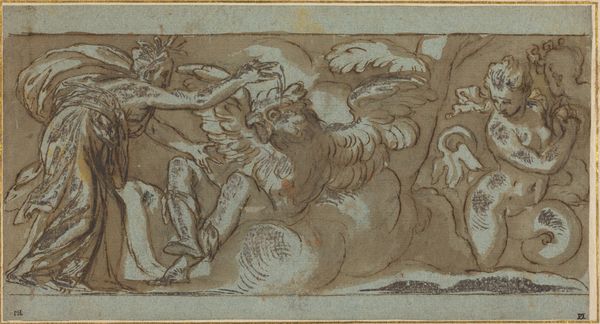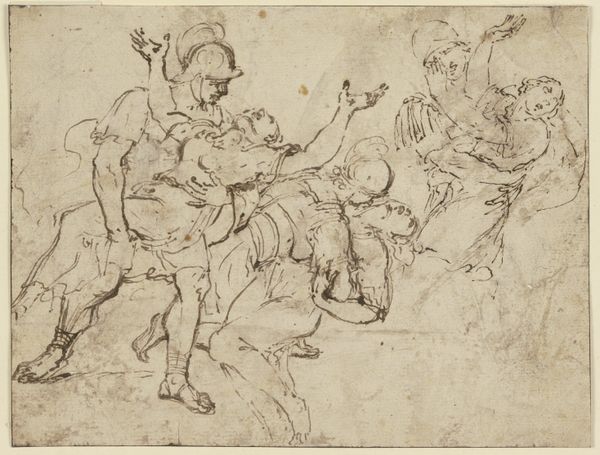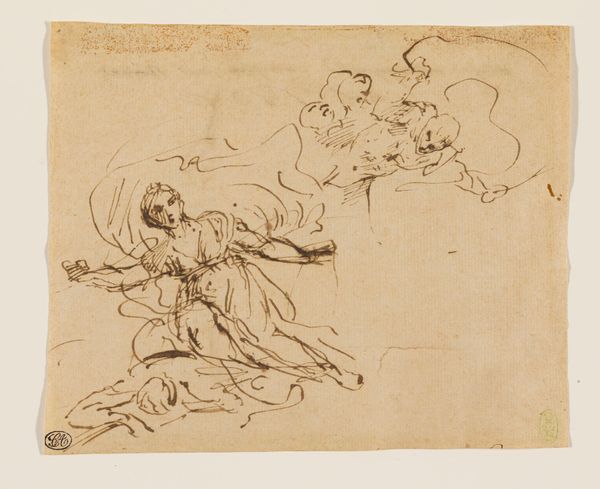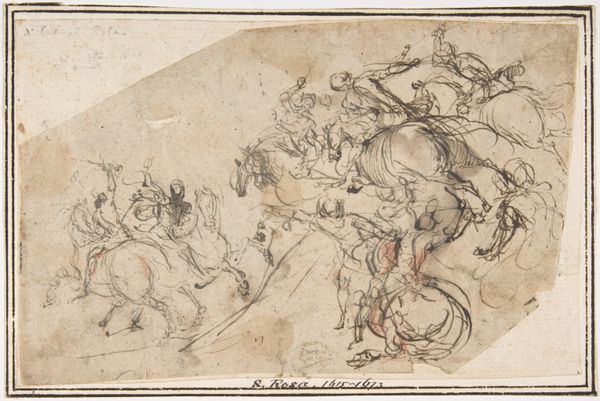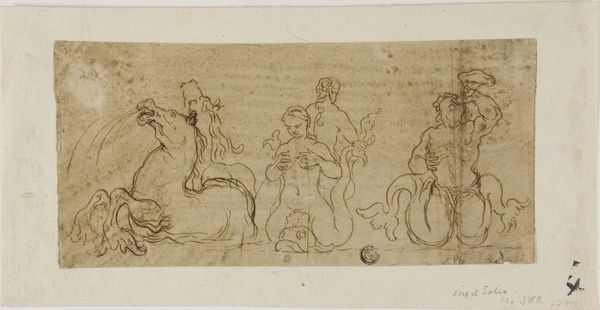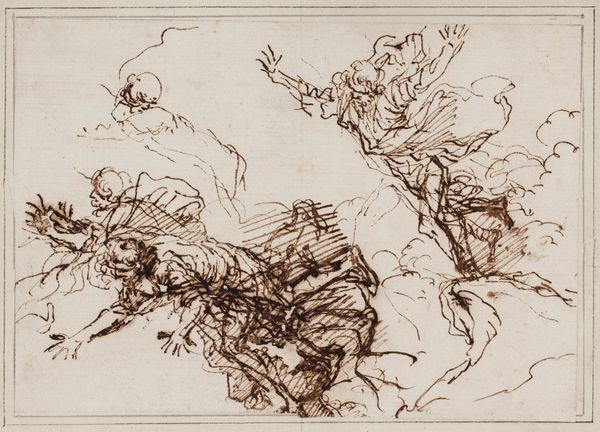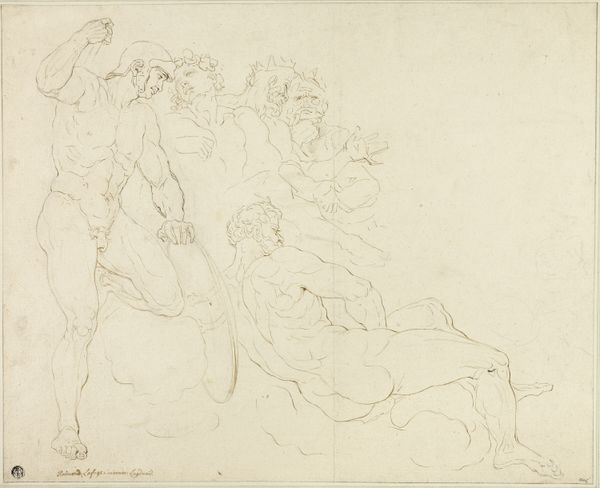
Four Sketches: Griffin, Grotesque Head, Head of Satyr, Bent Leg 1590 - 1594
0:00
0:00
drawing, print, paper, ink, ink-drawings, pen
#
drawing
#
toned paper
#
light pencil work
# print
#
pencil sketch
#
paper
#
personal sketchbook
#
ink
#
ink drawing experimentation
#
coffee painting
#
ink-drawings
#
water
#
sketchbook drawing
#
pen
#
watercolour illustration
#
italy
#
sketchbook art
#
watercolor
Dimensions: 196 × 271 mm
Copyright: Public Domain
Editor: This is “Four Sketches: Griffin, Grotesque Head, Head of Satyr, Bent Leg” by Agostino Carracci, made between 1590 and 1594. It's an ink drawing on paper. What strikes me is how fantastical and somewhat unsettling these figures are; like fragments from a vivid dream, with hints of satire. What do you see in this piece, and how do you interpret it? Curator: These aren’t just whimsical sketches, they are interventions within the very social fabric of Carracci's time. Consider the grotesque figures—historically, they're not merely monstrous but reflections of societal anxieties, poking fun at authority. Satyrs, often associated with unrestrained desires, serve as reminders of behaviors deemed inappropriate by the Church. Why do you think Carracci placed these figures together? Editor: Perhaps he was critiquing the established norms through this collection of unruly beings, particularly challenging the strictures of the Church with the inclusion of satyrs? The placement seems deliberate, inviting the viewer to consider the interplay of power, desire, and the monstrous other. Curator: Exactly. It also leads me to believe that there may have been resistance and a counter-narrative. Art in that time wasn't mere representation; it was an act of defiance. And remember the griffin – symbol of power, strength, a protector of divine, but made into caricature, it becomes mockery of authority. Do you think such grotesque figures carry similar significance today? Editor: Absolutely, I do. Think about political cartoons or contemporary artists who use monstrous figures to critique capitalism or environmental destruction. This really sheds light on the power of art to be both beautiful and critical, across centuries. I now see this drawing as much more than a simple sketch; it's a historical and social commentary. Curator: Precisely. And hopefully now also as an active participant of continuous dialogue through centuries, which makes this artwork alive today.
Comments
No comments
Be the first to comment and join the conversation on the ultimate creative platform.
